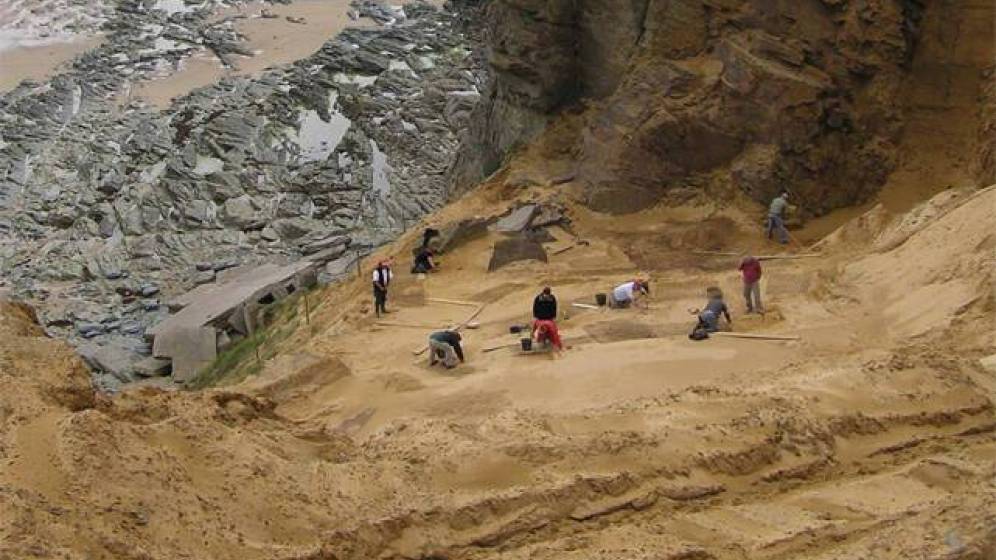En application du Code du Patrimoine, la DRAC de Basse-Normandie a pour mission d'inventorier, d'étudier et de conserver le patrimoine archéologique, de programmer et contrôler la recherche scientifique et de s’assurer de la diffusion des résultats via la publication annuelle du bilan scientifique régional destiné avant tout à la communauté scientifique. La fouille du Rozel a, elle, fourni l'occasion parfaite de mettre en chantier une collection destinée au plus grand nombre, qui évoluera avec l'actualité et présente les sites importants récemment fouillés ou en cours de fouilles depuis la préhistoire ancienne jusqu'au période contemporaine.
Avec le premier numéro de cette collection, découvrez, en compagnie de Dominique Cliquet, les Néandertaliens qui vivaient au Rozel il y a 110 000 ans.
Menacé de disparaître depuis plusieurs années sous l'effet de l'érosion rapide des dunes par la mer, le site du Rozel, situé dans le nord de la Manche, est connu depuis la fin des années 1960 pour la qualité des vestiges sur la vie des Néandertaliens qu'il abrite. Étudié à deux reprises, ce site archéologique de renommée internationale a déjà livré tout un ensemble d'outils en pierre associé à des restes de faune consommée : aurochs, cerfs élaphes, chevaux, et, découverte unique au monde, du morse.
Face sa destruction inéluctable, la DRAC, après concertation avec le Conservatoire du littoral, a mené sur ce site majeur en juin et septembre 2012 une première campagne de sauvetage sous la direction de Dominique Cliquet. Les résultats ont dépassé toute espérance. Au sein d'une aire de boucherie a été mis au jour un sol boueux piétiné par les Néandertaliens et qui a conservé plusieurs empreintes de pas. Il s'agit là d'une découverte très rare, peut-être unique en Europe..
Archéologie en Basse-Normandie n'°1
pdf - 10 Mo
Partager la page
